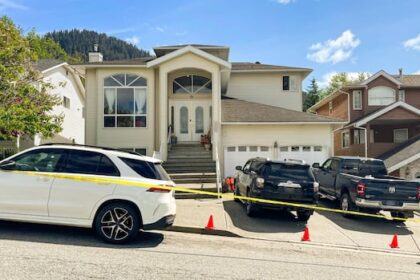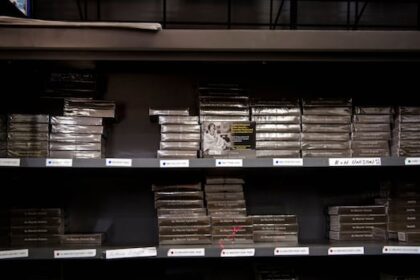New BrunswickA fire investigator from Alberta sheds light on what may be going on behind the scenes of the investigations into the wildfires that started in early August north of Miramichi and Moncton.Proving a fire was human-caused can take months or yearsJennifer Sweet · CBC News · Posted: Sep 16, 2025 5:00 AM EDT | Last Updated: September 16Traces of a small wildfire in the UNB woodlot in Fredericton. Investigators can examine burn scars and determine which way the fire spread. (Jennifer Sweet/CBC)It’s been over a month since the start of the two largest and most disruptive wildfires, so far, in an exceptionally busy season in New Brunswick, and an outside expert in wildfire investigation says it could take much longer before the causes are officially determined.The Oldfield Road fire started Aug. 6 and led to considerable anxiety for residents of Miramichi, about 15 kilometres south. It burned more than 1,400 hectares and caused a detour on Route 8 for a couple of weeks. The Pitt fire, in the Irishtown area north of Moncton, started Aug. 10 and had about 1,500 residents frantically packing up their belongings as they braced for possible evacuation — a situation that continued for a few days.These were just two of 348 fires this season, which officially continues until the end of October, although fire activity has dropped significantly in the last few weeks.As of Monday afternoon, there were just a couple of contained fires burning and a few others being patrolled, and the fire risk was low enough to allow some burning. (Government of New Brunswick)A total of 2,503 hectares has burned in 2025, according to the Department of Natural Resources. That compares to an average of 230 fires a year over the past 10 years, burning an average of 404 hectares annually.The minister of natural resources has acknowledged that the Oldfield and Irishtown fires are of particular interest. Provincial officials have said neither was caused by lightning and the investigations were expected to “take a bit of time.””They are very likely exploring all avenues to have a complete picture of what happened,” said Theo Bailey, who investigates wildfires in Alberta, a province that has recently seen more than 1,000 wildfires a year, burning hundreds of thousands to millions of hectares.Theo Bailey works for the wildfire investigation unit in Alberta and says investigations into fire cause can sometimes take years. (CBC)Investigators across the country conduct their work in a similar manner, following the same training standards, said Bailey, and it’s not unusual for an investigation to take this long.At this point, New Brunswick investigators may have an idea of the cause of each of the two fires, he said, but they could still have a lot of work to do before they can complete their investigations.Any investigation begins with the search for the origin of the fire, Bailey said.That’s done through an analysis of burn scars or fire pattern indicators that are left behind as fire moves through an area, he said.Some burned trees line the highway near the intersection of Route 8 and Oldfield Road. (Jennifer Sweet/CBC)”Trained investigators look for these signs that indicate the direction of fire spread, and they follow those back to the origin.”Once that’s determined, they look for signs of what caused the fire, he said, and there are many possibilities.”When the hazard is high, many activities that take place out in forested or grassland areas can lead to a fire. Really anything that causes a spark,” Bailey said. Recreational activities such as campfires are common causes in late summer, he said.Sparks can also come from the buildup of debris on an all-terrain vehicle, he continued, or from someone hitting a rock with a lawn mower or welding, grinding or other industrial activity.”They’re certainly not our most frequent of causes, but it is something that we look for,” Bailey said, noting that the most common causes vary by jurisdiction.This chart shows more than half of wildfires in Alberta are human caused. (Government of Alberta)”Depending on the circumstances, high complexity investigations can extend for months,” he said.Longer investigations often involve consulting with outside experts, said Bailey.”For example, if they’re needing more information on mechanical equipment, they may consult with mechanics �— whether it’s small engines, heavy duty mechanics, railway or otherwise.”They will work with experts in that field that can explain the operations of that equipment and what may have led to a failure that could have caused a fire.”In some cases, with serious fires, it can even take years for investigators work though large volumes of data and follow proper procedures, he said.”They may be doing things like seeking additional data from involved parties or exploring other investigative avenues that are more advanced techniques similar to what you would see in traditional law enforcement investigations. “That could lead to judicial authorizations, things like search warrants and production orders and things like that. And those do take time.”In an effort to be full, frank and fair … they have to explore all avenues before they’re able to make their final determination.”CBC News requested any available update on the wildfire investigations on Thursday. A spokesperson for the Public Safety Department replied Tuesday that it still cannot comment because the investigations continue.ABOUT THE AUTHORJennifer Sweet has been telling the stories of New Brunswickers for over 20 years. She is originally from Bathurst, got her journalism degree from Carleton University and is based in Fredericton. She can be reached at 451-4176 or jennifer.sweet@cbc.ca.
The trail may be getting colder, but it’s not too late to determine wildfire cause, says investigator











